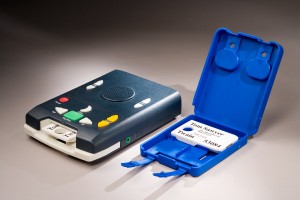What is the history of Talking Books and Braille? We have compiled a short list of facts that may interest you regarding that very question.
- The concept of a national library for the blind was developed in 1897 by John Russell Young, the seventh Librarian of Congress, when he established a reading room for the blind.
- The Indiana State Library first started mailing embossed books to patrons in 1905. The collection was made up of approximately 200 books donated to the library by patrons.
- The Pratt-Smoot Act, which established a national library service for the blind, became law on March 3, 1931.
- The first Braille book produced for the new service was for Woodrow Wilson’s “George Washington”, which was in high demand at the time due to the bicentennial of Washington’s birth.
- A uniform system of Braille was established in 1933. Before that competing forms of embossed print included Braille, Moon Type, and New York Point.
- The first “talking book” was developed in 1934. It was described as “the recording on a disc of the voice of a good reader, and its reproduction at will through the instrumentality of a reproducing machine or phonograph.”
- The Indiana State Library became an official NLS Regional Library for the Blind in 1934.
- The first talking books produced included: the Declaration of Independence; the Constitution of the United States; Washington’s Farewell Address; Lincoln’s Gettysburg Address; Shakespeare’s “As You Like It”, “The Merchant of Venice”, and “Hamlet” ; Kipling’s “The Brushwood Boy” ; and Wodehouse’s “Very Good Jeeves”.
- Patrons originally had to purchase their own talking book players which cost between thirty-five and sixty dollars.
This blog post was written by Margaret Ansty, Talking Book & Braille Library Supervisor, Indiana State Library. For more information, contact the Indiana State Library at (317)232-3684 or “Ask-A-Librarian” at http://www.in.gov/library/ask.htm.

